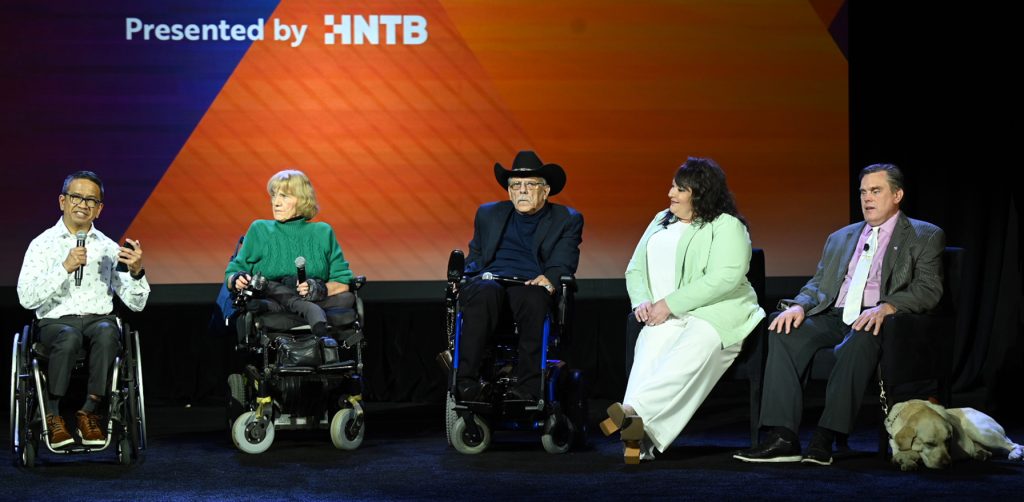ADA 34 Years Later. How Far Have We Come?
5/9/2024

The Closing General Session of APTA’s 2024 Mobility Conference was an important conversation on just how far public transit has come since the passage of the Americans with Disabilities Act in 1990. At the Accessible Transit – Thirty-Four Years After the Americans with Disabilities Act session, Kelly Buckland, disability policy advisor with USDOT, said “all forms of transportation have really gone through a metamorphosis,” reflecting on an historic lack of accessibility in transit.
There is much still to do though. Ron Brooks, senior director, policy & stakeholder engagement, UZURV, offered compelling thoughts. Brooks is blind. He says public transit is “still a challenge,” explaining that physical access is often adequate but that there are other areas where the industry needs to adapt. For him, it is much more about transportation equity than it is about access. “I want to have the same outcomes for folks with disabilities,” adding—to a huge round of applause—that no disabled rider should have to pay more because they have a disability.
Much of the forum was spent on how much paratransit has expanded, and what is still left to do. Jan Campbell, board member, Disability Rights Oregon and chair, TriMet Committee on Accessible Transportation, said: “Paratransit used to be an island, and we are actively working to build bridges to the mainland, to build bridges of communication and partnership,” and that small changes can make a big difference. To improve the ADA, the panel believes that more attention has to be paid to making trips easier to plan, and also to evolving to same-day service. Campbell points out that the goal should not just be honoring the letter of the ADA law but striving for its spirit and intent.
As we move into the future, how much more can be accomplished? More-accessible transportation systems are coming online, but Buckland pointed out “we are still creating transportation systems that leave disabled people behind.” Autonomous vehicles are the latest innovation, but without an attendant, they are not accessible to people with disabilities.
It is about more than just the physical aspect. Eileen Collins, director, accessible transportation programs, TriMet encouraged attendees to consider, for example, how digital content is delivered. Is it accessible to those with disabilities? “We have a role in helping people who should know better do better.”
TriMet partnered with Instacart for grocery and prescription deliveries and says it has saved $1.8 million in paratransit trips. Brooks suggests that internships and leadership training for people with disabilities is a great way to move closer toward equity—34 years after the landmark ADA.
Christopher Pangilinan, vice president, paratransit, MTA New York City Transit, was moderator.
See more images from the conference.